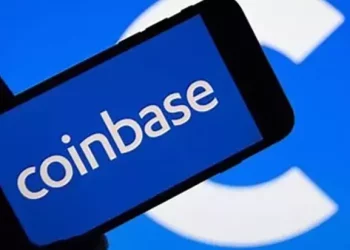In the rapidly evolving world of cryptocurrency, platforms like Binance have become integral for trading, storing, and managing digital assets. One of the key components of using Binance, or any cryptocurrency exchange, is understanding the concept of an address. An address in Binance plays a crucial role in transferring and receiving cryptocurrencies, ensuring that funds are securely directed to the intended destination. In this article, we will explore what an address is in Binance, how it works, and its importance in the world of cryptocurrency.
Understanding a Binance Address
A Binance address is a unique string of alphanumeric characters that represents a specific wallet or account within the Binance platform. Each cryptocurrency that is supported by Binance has its own distinct address format. These addresses are used to send and receive cryptocurrencies securely on the blockchain.
Unique Identifier: Just like a bank account number is used to identify a specific bank account, a Binance address uniquely identifies a specific wallet within the Binance platform.
Blockchain-Specific: Each cryptocurrency operates on its own blockchain, and therefore, the address format can vary depending on the blockchain. For example, a Bitcoin (BTC) address will differ from an Ethereum (ETH) address.
Public Key: A Binance address is essentially a public key that allows users to receive cryptocurrency. When someone sends cryptocurrency to a Binance address, the transaction is recorded on the blockchain, and the funds are credited to the corresponding wallet.
How a Binance Address Works
A Binance address works as a destination point for cryptocurrency transfers. When you want to receive cryptocurrency on Binance, you provide the sender with your Binance address. Similarly, if you want to send cryptocurrency from your Binance account to another wallet or exchange, you need the recipient’s address.
Generating a Binance Address
To receive cryptocurrency on Binance, you need to generate an address. This process is straightforward:
Log in to Binance: First, log in to your Binance account.
Navigate to Wallet: Go to the “Wallet” section, often labeled as “Fiat and Spot” or “Funding Wallet.”
Select the Cryptocurrency: Choose the cryptocurrency you want to receive. Each cryptocurrency will have its own address.
Generate Address: Click on the “Deposit” button for the selected cryptocurrency. Binance will generate a unique address for you. This is the address you will share with the sender.
Using a Binance Address for Transfers
Once you have a Binance address, you can use it to receive funds. Here’s how it works:
Receiving Cryptocurrency: Share your Binance address with the person or platform sending you cryptocurrency. Ensure that the sender is using the correct address and blockchain network to avoid any loss of funds.
Sending Cryptocurrency: To send cryptocurrency from your Binance account, you need to enter the recipient’s address in the “Withdraw” section. Double-check the address to ensure accuracy, as transactions on the blockchain are irreversible.
QR Codes and Binance Addresses
For convenience, Binance often provides a QR code alongside the alphanumeric address. Scanning the QR code automatically inputs the address, reducing the risk of errors when copying and pasting.
Avoiding Mistakes: Using the QR code minimizes the chance of input errors, which is especially important given the irreversible nature of blockchain transactions.
Importance of a Binance Address
Understanding and correctly using a Binance address is crucial for several reasons:
Secure Transactions
A Binance address ensures that cryptocurrency transactions are secure and directed to the correct wallet. Since blockchain transactions are immutable, using the correct address is vital to avoid losing funds.
Correct Destination: Entering the wrong address could result in funds being sent to an incorrect or non-existent wallet, making it impossible to retrieve them.
Blockchain Verification: Each transaction involving a Binance address is recorded on the blockchain, providing a transparent and verifiable record of the transfer.
Privacy and Anonymity
While a Binance address is public and can be shared with others to receive funds, it does not directly reveal the identity of the user. This allows for a degree of privacy in cryptocurrency transactions.
Anonymity: Users can transact using Binance addresses without revealing personal information, although the transparency of the blockchain means that transactions can still be traced.
Multiple Addresses: Binance allows users to generate multiple addresses for the same cryptocurrency, further enhancing privacy by using different addresses for different transactions.
Compatibility Across Platforms
Binance addresses are compatible with various platforms and wallets that support the same cryptocurrency. This interoperability makes it easy to transfer funds between Binance and other exchanges, wallets, or services.
Cross-Platform Transfers: You can use a Binance address to receive funds from external wallets, exchanges, or even decentralized applications (DApps) that support the cryptocurrency.
Ease of Use: The ability to generate and manage multiple addresses for different cryptocurrencies simplifies the process of managing digital assets.
Common Issues with Binance Addresses
While Binance addresses are designed to be user-friendly, there are some common issues that users should be aware of:
Network Compatibility
When sending or receiving cryptocurrency, it’s essential to ensure that the correct blockchain network is selected. For example, sending Ethereum (ETH) to a Binance Smart Chain (BSC) address could result in the loss of funds.
Selecting the Right Network: Binance often provides multiple networks (e.g., ERC-20, BEP-20) for certain cryptocurrencies. Users must select the appropriate network that matches the recipient’s address.
Transaction Failures: Choosing the wrong network can cause transactions to fail or result in funds being sent to an incompatible address.
Address Expiry
While most Binance addresses are permanent, some addresses generated for specific purposes (like certain deposit methods) may have an expiry period.
Checking Address Validity: Before sending funds, confirm that the address is still valid and active, especially if it was generated some time ago.
Avoiding Losses: Using an expired address can result in the loss of funds, so it’s crucial to verify the address before initiating a transaction.
Human Errors
Manually entering or copying an address can lead to mistakes, such as missing or extra characters, which can cause the transaction to fail or send funds to the wrong destination.
Double-Check Addresses: Always double-check the address before confirming a transaction. Some platforms also offer checksum features to detect common errors.
Using QR Codes: To minimize the risk of errors, consider using the QR code provided by Binance when available.
See also: What’s Binance Withdraw Bank Account?
Conclusion
A Binance address is a fundamental component of cryptocurrency transactions on the Binance platform. It serves as a unique identifier that ensures funds are securely directed to the correct wallet. Understanding how to generate, use, and verify a Binance address is crucial for anyone involved in cryptocurrency trading or transfers.
The security, privacy, and interoperability of Binance addresses make them an essential tool for managing digital assets. However, users must remain vigilant to avoid common issues such as network compatibility, address expiry, and human errors. By mastering the use of Binance addresses, users can confidently navigate the world of cryptocurrency, ensuring that their transactions are both secure and efficient.
As the cryptocurrency landscape continues to evolve, the importance of correctly using addresses on platforms like Binance will only grow. Whether you’re a seasoned trader or a newcomer to the world of digital currencies, understanding the intricacies of Binance addresses is key to successful and secure cryptocurrency management.
Related topics:

















